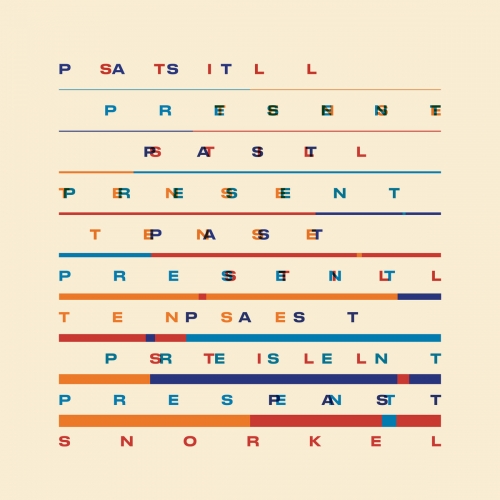Cleveland Orchestra, Franz Welser-Möst - Tchaikovsky: Symphony No. 4 (2023) [Hi-Res]

Artist: Cleveland Orchestra, Franz Welser-Möst
Title: Tchaikovsky: Symphony No. 4
Year Of Release: 2023
Label: Cleveland Orchestra
Genre: Classical
Quality: flac lossless (tracks) / flac 24bits - 96.0kHz +Booklet
Total Time: 00:39:47
Total Size: 189 / 716 mb
WebSite: Album Preview
TracklistTitle: Tchaikovsky: Symphony No. 4
Year Of Release: 2023
Label: Cleveland Orchestra
Genre: Classical
Quality: flac lossless (tracks) / flac 24bits - 96.0kHz +Booklet
Total Time: 00:39:47
Total Size: 189 / 716 mb
WebSite: Album Preview
01. Symphony No. 4 in F Minor, Op. 36: I. Andante sostenuto - Moderato con anima
02. Symphony No. 4 in F Minor, Op. 36: II. Andantino in modo di canzona
03. Symphony No. 4 in F Minor, Op. 36: III. Scherzo. Pizzicato ostinato
04. Symphony No. 4 in F Minor, Op. 36: IV. Finale. Allegro con fuoco
The Cleveland Orchestra will release a new audio recording of Pyotr Ilyich Tchaikovsky’s Symphony No. 4 in F minor on Friday, December 1, 2023. Led by Music Director Franz Welser-Möst.
Tchaikovsky: Symphony No. 4 was recorded live at the Jack, Joseph and Morton Mandel Concert Hall at Severance Music Center, the home of The Cleveland Orchestra, during two community appreciation concerts in the fall of 2021.
This new album is the fourth digital recording released by The Cleveland Orchestra in 2023 following Prokofiev: Symphony No. 5 in March, Berg: Three Pieces from Lyric Suite – Strauss: Suite from Der Rosenkavalier in June, and Schubert: Mass No. 6 in September. Visit The Cleveland Orchestra’s recordings website for more information on all recent releases.
The 2023-24 season commemorates the centennial of The Cleveland Orchestra’s first-ever recording: Tchaikovsky’s 1812 Overture, conducted by the Orchestra’s first Music Director, Nikolai Sokoloff and released in 1924. In the hundred years since, the Orchestra has consistently been among the most acclaimed and recorded in the world, receiving eight Grammy Awards and many international prize ratings. An enthusiastic adopter of emerging techniques—ranging from the long-playing record in the George Szell era to early digital recording technologies under Lorin Maazel—The Cleveland Orchestra has consistently led the industry as a recording orchestra of the highest caliber, and the Orchestra's performances have been heard by millions through radio and television broadcasts, physical media, and most recently streaming online.
About Tchaikovsky’s Symphony No. 4: “There is not a note in this symphony which I did not feel deeply, and which did not serve as an echo of sincere impulses within my soul,” wrote Pyotr Ilyich Tchaikovsky of his Fourth Symphony, which he would call his “best symphonic work ever.” The origin of the work comes from two meaningful events in 1877. The first is the start of his relationship with the benefactor Nadezhda von Meck. The second is the composer’s hasty and ill-fated marriage to his former pupil, Antonina Ivanovna Miliukova, and subsequent psychological crisis.
In the wake of these circumstances, Tchaikovsky threw himself into finishing the symphony in late 1877 into early 1878. He later revealed his inspiration to von Meck: “The introduction is the seed of the whole symphony, undoubtedly the main idea: This is fate: this is that fateful force which prevents the impulse to happiness from attaining its goal, which jealously ensures that peace and happiness shall not be complete and unclouded, which hangs above the head like the sword of Damocles, unwaveringly, constantly poisoning the soul. It is an invincible force that can never be overcome — merely endured, hopelessly.”
The second movement represents “a whole procession of memories,” and the following Scherzo, plucked enrely by the strings in pizzicato, is filled with “whimsical arabesques, vague images.” The Finale, based on a Russian folksong, brushes off the previous sorrows and proclaims: “Rejoice in the rejoicing of others. To live is still possible.”




![Yasuhiro Usui, Ryoko Ono and Taro Tatsumaki - The House Concert Live Collection, Vol. 55: Yasuhiro Usui (Live at 3rd Floor, Artist House, Daehak-ro, Seoul, 7/12/2015) (2025) [Hi-Res] Yasuhiro Usui, Ryoko Ono and Taro Tatsumaki - The House Concert Live Collection, Vol. 55: Yasuhiro Usui (Live at 3rd Floor, Artist House, Daehak-ro, Seoul, 7/12/2015) (2025) [Hi-Res]](https://www.dibpic.com/uploads/posts/2025-12/1765791289_rchn1y2nh7yfb_600.jpg)
![Tomasz Stańko - Unit (Polish Radio Sessions vol. 2/6) (2025) [Hi-Res] Tomasz Stańko - Unit (Polish Radio Sessions vol. 2/6) (2025) [Hi-Res]](https://www.dibpic.com/uploads/posts/2025-12/1765790300_cover.jpg)


